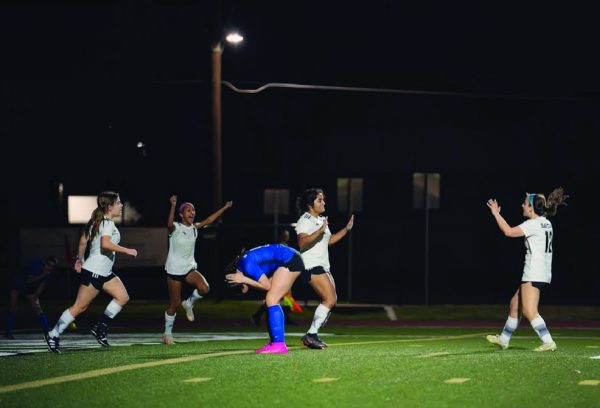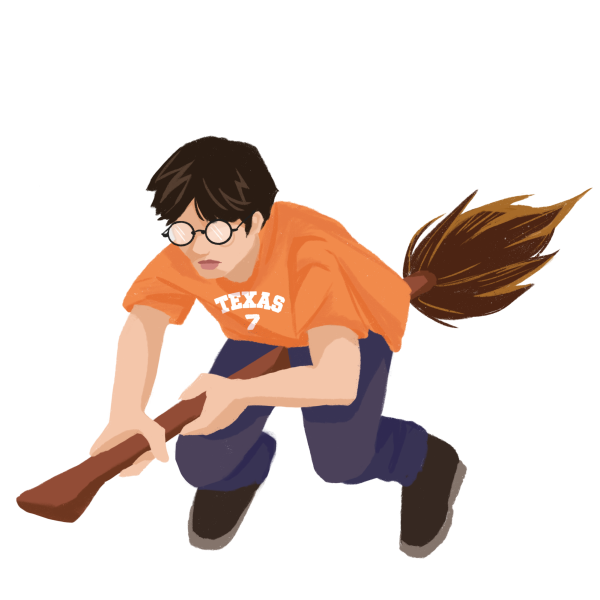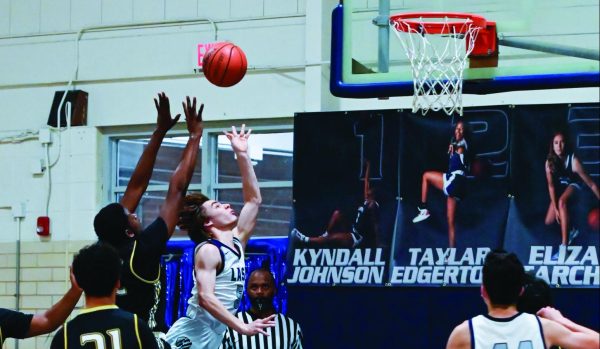Editorial: The Hard Hitting Facts About Contact Sports
March 6, 2023
After the injury of Damar Hamlin, the safety player for the Buffalo Bills football team, awareness for high-impact sports injuries are at an all-time high. Hamlin’s injury was freakishly uncommon and not directly correlated with most of the concerns for sports like football, but many see it as a warning sign, according to The Washington Post. High-impact sports can have catastrophic consequences on players’ lives, and the recent media attention on their repercussions is a step in the right direction.
Historically, professional sports injuries have been overlooked for the entertainment of the viewer, and many athletes play on injuries to boost public interest or out of fear of disappointing their fans, according to Integrated Rehabilitation Services. Ironically, these injuries often cause a short-lived career. Arguably the most famous football player of all time, Tom Brady, played the entirety of his 2008 season recovering from an ACL tear, and then in 2021 won the Super Bowl LV while harboring an MCL tear on the same knee for the entire 2020 season, eventually retiring in 2023.
Although knee and other limb injuries are common in many sports, and can often result in an early retirement for the players who suffered from them, they are not the most debilitating. Concussions are a scarily frequent occurrence in high-impact sports, most commonly in ice hockey, football, and lacrosse respectively. A study done by Henry Ford Hospital’s Department of Orthopaedic Surgery in Detroit Michigan found that concussion rates in the National Hockey League are between 5.8 to 6.1 concussions per every 100 games. With 1,312 games in the average NHL season, this means on average there are anywhere from 76 to 82 concussions per season.
Boston University Neurology found that constant concussions can lead to post-concussion syndrome (PCS), or in extreme cases, chronic traumatic encephalopathy (CTE). CTE often manifests itself with an alarming symptom list consisting of memory loss, impaired judgment, impulse control issues, Parkinson’s disease, and in patients that live long enough, progressive dementia. All of these symptoms prove that head trauma from high-impact sports can have catastrophic results, which is why injuries in sports must be taken more seriously.
Often used as a poster boy for PCS in hockey, Pat LaFontaine, who played in the NHL for 15 years, suffered 6 concussions throughout his career as a player. In the 1996-1997 season, he was advised by the Buffalo Sabres medical team to retire after he was diagnosed with PCS, according to the New York Post. Instead, he was traded to the New York Rangers where in 1998 he suffered yet another head injury, resulting in aggressive, persistent post-concussive syndrome. LaFontaine told the NHL that “the worst thing you can do is come back too early,” adding that “you wouldn’t only be jeopardizing your career, but you might also suffer long-term damage.” LaFontaine’s advice perfectly encapsulates why high impact sports should be regarded with more attentiveness, with a focus on athlete care instead of media press and competition.
For a formal CTE diagnosis, the patient’s brain tissue needs to be analyzed post-mortem. Many current and former professional athletes have been either formally or informally diagnosed with CTE. Two famous cases of informal diagnoses (both of whom are still alive) are football players OJ Simpson and Antonio Brown. Both athletes have shown violent behavior and impaired judgment, with Brown having multiple domestic abuse lawsuits against him and Simpson being accused and acquitted of double first-degree murder.
Both Simpson and Brown are proof that high-impact sports can not only harm the athletes but also those around them. CTE can have serious consequences and many leagues don’t have the proper protocol to protect their athletes, and in turn, their loved ones. Suggested safety protocols consist of intensive concussion training, stronger rules promoting player safety, regular medical checks, and heightened medical assistance on sight at all practices and games.
Unfortunately, major sports leagues seem unequipped to handle these types of catastrophic injuries. According to USA Today, at the Bills-Bengals football game where Damar Hamlin went into cardiac arrest, the National Football League instructed players to take a five minute intermission before proceeding with the game. Clearly, players did not go through with this and stood in support of Hamlin. The NFL later denied ever instructing players to do so, but athletes should have more time to treat and assess their injuries during games in order to prevent more serious, long term injuries down the road
Additionally, much of the NFL’s behavior throughout the incident seems to be far more for PR than for any actual care for Hamlin. The vast amount of highly-skilled players in leagues allow leagues to treat the signed ones as if they are statistics that can be replaced and not just human like us. This, coupled with an athlete’s pressure to prioritize playing instead of their health, makes high impact sports dangerous.
The serious and verifiable damages caused by high-impact sports are endless. The abundance of players and their loved ones who have suffered from the long-lasting effects of high impact sport injuries should be enough for leagues to insure more extreme safety precautions in the future.








